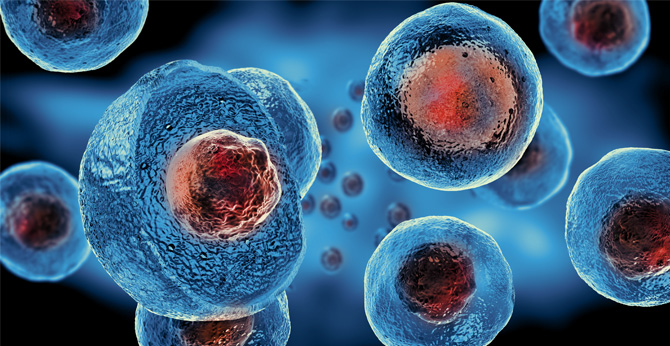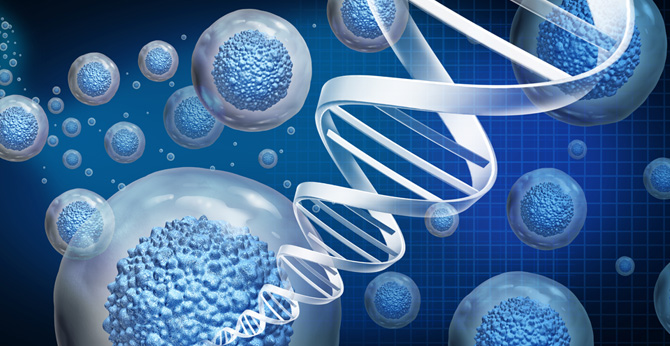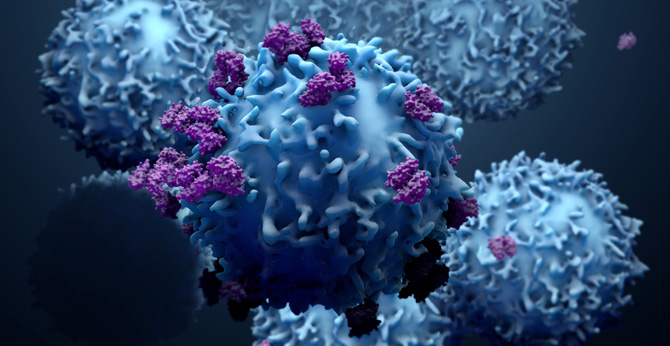All products and services are For Research Use Only and CANNOT be used in the treatment or diagnosis of disease.
The vector of anti-CD19 chimeric antigen receptor (CAR) is constructed for the engineering of T cells to target human CD19. The T cells are genetically modified through transduction with a lentiviral vector expressing scFv of anti-CD19 antibody linked to a CD28 transmembrane domain/ endodomain and OX40, CD3-zeta signaling domains. And the vector product was designed for the treatment of chronic lymphoid leukemia.
|
CAR Construction : FMC63 scFv-BBζ; FMC63 scFv-28ζ
Fig.1 Leukaemic response and relapse patterns associated with FMC63 scFv-based CAR. Kaplan-Meier survival analysis of mice bearing NALM6 cells treated with 0.2 × 10^6 transduced CAR T cells. n = 5-7 mice per group pooled from two independent experiments. Hamieh, M., Dobrin, A., Cabriolu, A., van der Stegen, S. J., Giavridis, T., Mansilla-Soto, J., ... & Sadelain, M. (2019). CAR T cell trogocytosis and cooperative killing regulate tumour antigen escape. Nature, 568(7750), 112-116. |
|
CAR Construction : FMC63 scFv-BBζ; FMC63 scFv-28ζ
Fig.2 Leukaemic response and relapse patterns associated with FMC63 scFv-based CAR. Representative FACS profile of PD-1, LAG-3 and TIM-3 surface expression on BBζ CAR T cells isolated from relapsed mice. (data are representative of n = 3 mice per group). Hamieh, M., Dobrin, A., Cabriolu, A., van der Stegen, S. J., Giavridis, T., Mansilla-Soto, J., ... & Sadelain, M. (2019). CAR T cell trogocytosis and cooperative killing regulate tumour antigen escape. Nature, 568(7750), 112-116. |
|
CAR Construction : FMC63 scFv-28ζ
Fig.4 FMC63 and 4G7 CAR T cells effectively responded to CD19‐positive NALM‐6 cells. Tumor-killing ability of FMC63, 4G7, and FITC CAR T cells against luciferase-expressing NALM-6 and U937. FMC63, 4G7, and FITC CAR T cells (2 × 10^5 cells) were co-cultured with luciferase-expressing NALM-6 (2 × 10^4 cells) or U937 (2 × 10^4 cells) for indicated incubation times at the E:T ratio 10:1. Then, luminescence values were measured. Kang, C. H., Kim, Y., Lee, H. K., Lee, S. M., Jeong, H. G., Choi, S. U., & Park, C. H. (2020). Identification of potent CD19 scFv for CAR T cells through scFv screening with NK/T-cell line. International Journal of Molecular Sciences, 21(23), 9163. |
|
CAR Construction :
Fig.5 Kinetic binding properties of CD19 scFv derived from CD19 hybridomas. Anti-CD19 scFv was fused to mouse IgG2a-Fc in a SFG-eBFP γ-retroviral expression vector and HEK293T cells were transfected to generate secreted scFv, which were then purified Ghorashian, S., Kramer, A. M., Onuoha, S., Wright, G., Bartram, J., Richardson, R., ... & Amrolia, P. J. (2019). Enhanced CAR T cell expansion and prolonged persistence in pediatric patients with ALL treated with a low-affinity CD19 CAR. Nature medicine, 25(9), 1408-1414. |
|
CAR Construction : FMC63 scFv-BBζ
Fig.6 Antigen-specific killing of CD19+ tumor cells by CD19 CAR+ T cells (FMC63 or CAT) or non-transduced (NT) T cells. CAR+ T cell cytotoxic activity against SupT1 cells that are engineered to express CD19 (SupT1CD19, left) as well as target-antigen-negative non-transduced SupT1NT (right), as measured by standard 4-h 51Chromium-release assay. Ghorashian, S., Kramer, A. M., Onuoha, S., Wright, G., Bartram, J., Richardson, R., ... & Amrolia, P. J. (2019). Enhanced CAR T cell expansion and prolonged persistence in pediatric patients with ALL treated with a low-affinity CD19 CAR. Nature medicine, 25(9), 1408-1414. |
|
CAR Construction : FMC63 scFv-BBζ
Fig.7 Cytokine production in response to 1:1 coculture of FMC63-CAR cells with irradiated Raji cells. Production of cytokines in response to 1:1 coculture of CAR cells with irradiated Raji cells, measured by a cytokine bead array of culture supernatants Ghorashian, S., Kramer, A. M., Onuoha, S., Wright, G., Bartram, J., Richardson, R., ... & Amrolia, P. J. (2019). Enhanced CAR T cell expansion and prolonged persistence in pediatric patients with ALL treated with a low-affinity CD19 CAR. Nature medicine, 25(9), 1408-1414. |
|
CAR Construction : FMC63 scFv-BBζ
Fig.8 FMC63 CAR-T cells show effector-specific function with wildtype CD19+ targeted cells in vitro. Tumor cells were incubated with CAR-T cells for 6 hours. Then the tumor cells were collected and stained with Annexin-V/PI to determine specific lysis. Zhang, Z., Chen, X., Tian, Y., Li, F., Zhao, X., Liu, J., ... & Zhang, Y. (2020). Point mutation in CD19 facilitates immune escape of B cell lymphoma from CAR-T cell therapy. Journal for immunotherapy of cancer, 8(2). |
|
CAR Construction : FMC63 scFv-BBζ
Fig.9 FMC63 CAR-T cells show effector-specific function with mutant CD19+ targeted cells in vitro. Tumor cells were incubated with CAR-T cells for 6 hours. Then the tumor cells were collected and stained with Annexin-V/PI to determine specific lysis. Zhang, Z., Chen, X., Tian, Y., Li, F., Zhao, X., Liu, J., ... & Zhang, Y. (2020). Point mutation in CD19 facilitates immune escape of B cell lymphoma from CAR-T cell therapy. Journal for immunotherapy of cancer, 8(2). |
|
CAR Construction : FMC63 scFv-BBζ
Fig.10 Bioluminescent imaging of antitumor ability of CD19 CAR-T cells in vivo. 1e6 luciferase-transgenic Raji cells were inoculated into SCID-beige mice via tail on day 7. The 1e6 wild type or mutated CD19 positive H322/Luc cells were subcutaneously injected into the mice. On day 0, 1e7 CAR-Τ cells were injected intravenously (intravenous). Then, tumor growth was monitored via bioluminescent imaging test. Zhang, Z., Chen, X., Tian, Y., Li, F., Zhao, X., Liu, J., ... & Zhang, Y. (2020). Point mutation in CD19 facilitates immune escape of B cell lymphoma from CAR-T cell therapy. Journal for immunotherapy of cancer, 8(2). |
|
CAR Construction : FMC63 scFv-BBζ
Fig.11 Bioluminescent imaging of antitumor ability of CD19 CAR-T cells in vivo. 1e6 luciferase-transgenic Raji cells were inoculated into SCID-beige mice via tail on day 7. The 1e6 wild type or mutated CD19 positive H322/Luc cells were subcutaneously injected into the mice. On day 0, 1e7 CAR-Τ cells were injected intravenously (intravenous). Then, tumor growth was monitored via bioluminescent imaging test. Zhang, Z., Chen, X., Tian, Y., Li, F., Zhao, X., Liu, J., ... & Zhang, Y. (2020). Point mutation in CD19 facilitates immune escape of B cell lymphoma from CAR-T cell therapy. Journal for immunotherapy of cancer, 8(2). |
|
CAR Construction : FMC63 scFv-BBζ
Fig.12 Data summary of antitumor ability of CD19 CAR-T cells in vivo. 1e6 luciferase-transgenic Raji cells were inoculated into SCID-beige mice via tail on day 7. The 1e6 wild type or mutated CD19 positive H322/Luc cells were subcutaneously injected into the mice. On day 0, 1e7 CAR-Τ cells were injected intravenously (intravenous). Then, tumor growth was monitored via bioluminescent imaging test. Zhang, Z., Chen, X., Tian, Y., Li, F., Zhao, X., Liu, J., ... & Zhang, Y. (2020). Point mutation in CD19 facilitates immune escape of B cell lymphoma from CAR-T cell therapy. Journal for immunotherapy of cancer, 8(2). |
|
CAR Construction : FMC63 scFv-BBζ; FMC63 scFv-28BBζ
Fig.13 Anti-tumor activities of mFMC63-CAR T cells. Fluorescence images of HeLa-CD19+ expressing mCherry co-cultured with CAR T cells at an E:T ratio of 10:1 as analyzed by fluorescence microscopy. Wutti-In, Y., Sujjitjoon, J., Sawasdee, N., Panya, A., Kongkla, K., Yuti, P., ... & Yenchitsomanus, P. T. (2021). Development of a Novel Anti-CD19 CAR Containing a Fully Human scFv and Three Costimulatory Domains. Frontiers in oncology, 11. |
|
CAR Construction : FMC63 scFv-BBζ; FMC63 scFv-28BBζ
Fig.14 Anti-tumor activities of mFMC63-CAR T cells. Bar graphs represent the percentages of cytotoxicity against HeLa-CD19+ target cells by CAR T cells as measured by crystal violet staining assay. Wutti-In, Y., Sujjitjoon, J., Sawasdee, N., Panya, A., Kongkla, K., Yuti, P., ... & Yenchitsomanus, P. T. (2021). Development of a Novel Anti-CD19 CAR Containing a Fully Human scFv and Three Costimulatory Domains. Frontiers in oncology, 11. |
|
CAR Construction : FMC63 scFv-BBζ; FMC63 scFv-28BBζ
Fig.15 Anti-tumor activities of mFMC63-CAR T cells. Cytotoxicity of Raji cells expressing CD19 antigen by CAR T cells after co-culturing at an E:T ratio of 1:1 for 24 and 48 h. Wutti-In, Y., Sujjitjoon, J., Sawasdee, N., Panya, A., Kongkla, K., Yuti, P., ... & Yenchitsomanus, P. T. (2021). Development of a Novel Anti-CD19 CAR Containing a Fully Human scFv and Three Costimulatory Domains. Frontiers in oncology, 11. |
|
CAR Construction : FMC63 scFv-BBζ; FMC63 scFv-28BBζ
Fig.16 IL-2 production in response to coculture of FMC63-CAR cells with Raji cells. Levels of secreted IL-2 cytokines in the culture supernatants of co-cultured CAR T cells and Raji cells. Wutti-In, Y., Sujjitjoon, J., Sawasdee, N., Panya, A., Kongkla, K., Yuti, P., ... & Yenchitsomanus, P. T. (2021). Development of a Novel Anti-CD19 CAR Containing a Fully Human scFv and Three Costimulatory Domains. Frontiers in oncology, 11. |
|
CAR Construction : FMC63 scFv-BBζ; FMC63 scFv-28BBζ
Fig.17 IFN-γ production in response to coculture of FMC63-CAR cells with Raji cells. Levels of secreted IFN-γ cytokines in the culture supernatants of co-cultured CAR T cells and Raji cells. Wutti-In, Y., Sujjitjoon, J., Sawasdee, N., Panya, A., Kongkla, K., Yuti, P., ... & Yenchitsomanus, P. T. (2021). Development of a Novel Anti-CD19 CAR Containing a Fully Human scFv and Three Costimulatory Domains. Frontiers in oncology, 11. |
|
CAR Construction : FMC63 scFv-BBζ; FMC63 scFv-28BBζ
Fig.18 TNF-α production in response to coculture of FMC63-CAR cells with Raji cells. Levels of secreted TNF-α cytokines in the culture supernatants of co-cultured CAR T cells and Raji cells. Wutti-In, Y., Sujjitjoon, J., Sawasdee, N., Panya, A., Kongkla, K., Yuti, P., ... & Yenchitsomanus, P. T. (2021). Development of a Novel Anti-CD19 CAR Containing a Fully Human scFv and Three Costimulatory Domains. Frontiers in oncology, 11. |
|
CAR Construction : FMC63 scFv-28BBζ
Fig.19 The killing activities of mFMC63-CAR4 T cells against Raji cell line. The killing activities of mFMC63-CAR4 T cells against Raji (CD19+) cells after co-culturing at effector to target (E:T) ratios of 1:1, 2.5:1, and 5:1 for 4 hours. Wutti-In, Y., Sujjitjoon, J., Sawasdee, N., Panya, A., Kongkla, K., Yuti, P., ... & Yenchitsomanus, P. T. (2021). Development of a Novel Anti-CD19 CAR Containing a Fully Human scFv and Three Costimulatory Domains. Frontiers in oncology, 11. |
|
CAR Construction : FMC63 scFv-28BBζ
Fig.20 The killing activities of mFMC63-CAR4 T cells against K562-CD19. The killing activities of mFMC63-CAR4 T cells against K562-CD19+ cells after co-culturing at effector to target (E:T) ratios of 1:1, 2.5:1, and 5:1 for 4 hours. Wutti-In, Y., Sujjitjoon, J., Sawasdee, N., Panya, A., Kongkla, K., Yuti, P., ... & Yenchitsomanus, P. T. (2021). Development of a Novel Anti-CD19 CAR Containing a Fully Human scFv and Three Costimulatory Domains. Frontiers in oncology, 11. |
|
CAR Construction : FMC63 scFv-28BBζ
Fig.21 IFN-γ production in the cell culture supernatants of anti-CD19 CAR T cells after activation by culturing with Raji (CD19+) cells. The levels of IFN-γ production in the cell culture supernatants of anti-CD19 CAR T cells after activation by culturing with Raji (CD19+) cells at an E:T ratio of 5:1 for 24 h were analyzed by enzyme-linked immunosorbent assay (ELISA). Wutti-In, Y., Sujjitjoon, J., Sawasdee, N., Panya, A., Kongkla, K., Yuti, P., ... & Yenchitsomanus, P. T. (2021). Development of a Novel Anti-CD19 CAR Containing a Fully Human scFv and Three Costimulatory Domains. Frontiers in oncology, 11. |
|
CAR Construction : FMC63 scFv-28BBζ
Fig.22 TNF-α production in the cell culture supernatants of anti-CD19 CAR T cells after activation by culturing with Raji (CD19+) cells. The levels of TNF-α production in the cell culture supernatants of anti-CD19 CAR T cells after activation by culturing with Raji (CD19+) cells at an E:T ratio of 5:1 for 24 h were analyzed by enzyme-linked immunosorbent assay (ELISA). Wutti-In, Y., Sujjitjoon, J., Sawasdee, N., Panya, A., Kongkla, K., Yuti, P., ... & Yenchitsomanus, P. T. (2021). Development of a Novel Anti-CD19 CAR Containing a Fully Human scFv and Three Costimulatory Domains. Frontiers in oncology, 11. |
More Published Data More Published Data
There are currently no customer reviews or questions for Anti-CD19 scFv h(CD28-OX40-CD3ζ) CART, pCDCAR1 (CAR-T-3-L332-2XZ). Click the button below to contact us or submit your feedback about this product.
For research use only. Not intended for any clinical use. No products from Creative Biolabs may be resold, modified for resale or used to manufacture commercial products without prior written approval from Creative Biolabs.
For any technical issues or product/service related questions, please leave your information below. Our team will contact you soon.
 NEWSLETTER
NEWSLETTER
The latest newsletter to introduce the latest breaking information, our site updates, field and other scientific news, important events, and insights from industry leaders
LEARN MORE NEWSLETTER NEW SOLUTION
NEW SOLUTION
CellRapeutics™ In Vivo Cell Engineering: One-stop in vivo T/B/NK cell and macrophage engineering services covering vectors construction to function verification.
LEARN MORE SOLUTION NOVEL TECHNOLOGY
NOVEL TECHNOLOGY
Silence™ CAR-T Cell: A novel platform to enhance CAR-T cell immunotherapy by combining RNAi technology to suppress genes that may impede CAR functionality.
LEARN MORE NOVEL TECHNOLOGY NEW SOLUTION
NEW SOLUTION
Canine CAR-T Therapy Development: From early target discovery, CAR design and construction, cell culture, and transfection, to in vitro and in vivo function validation.
LEARN MORE SOLUTION